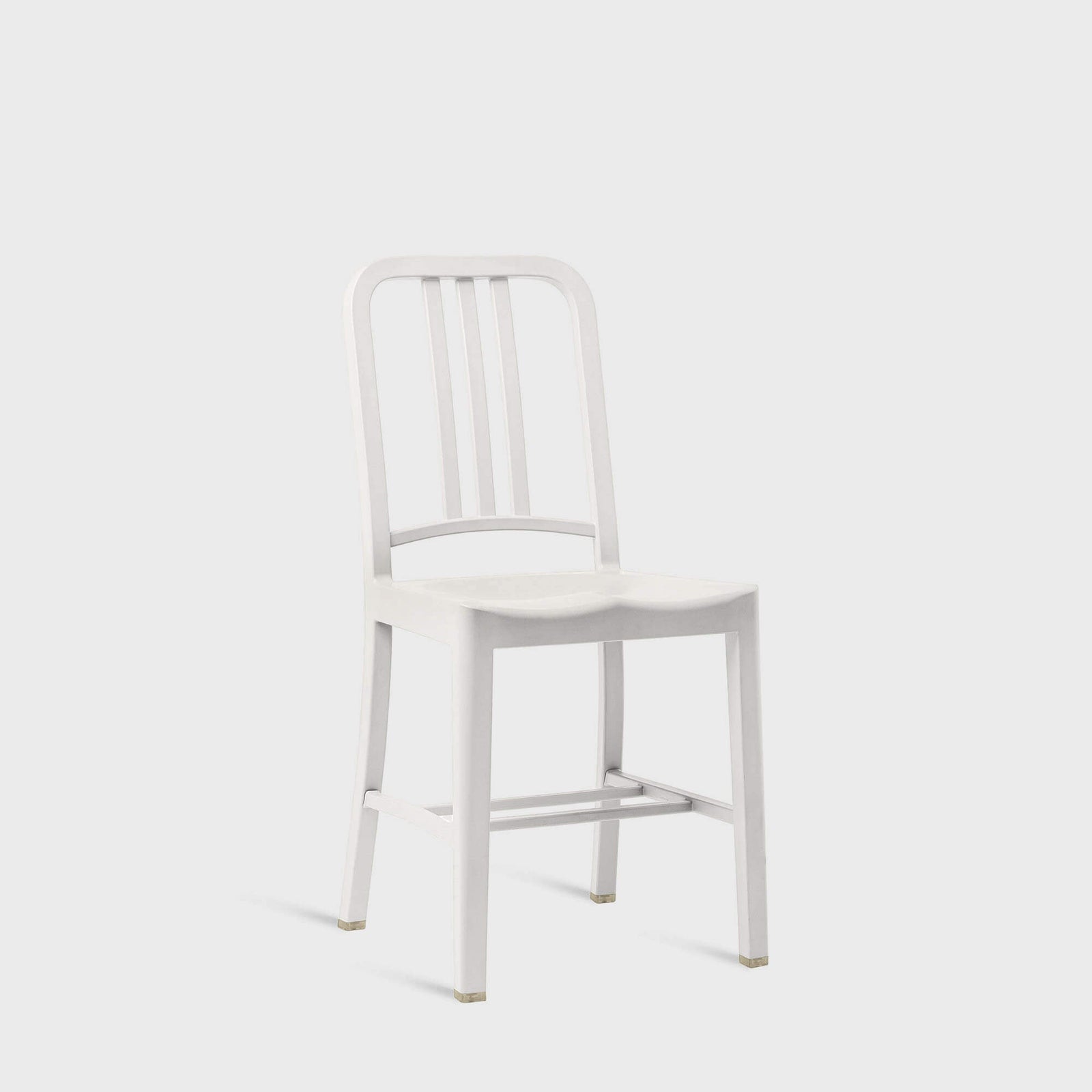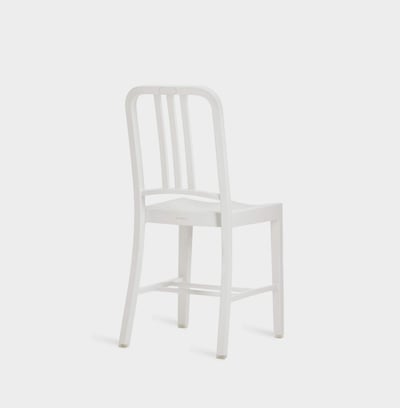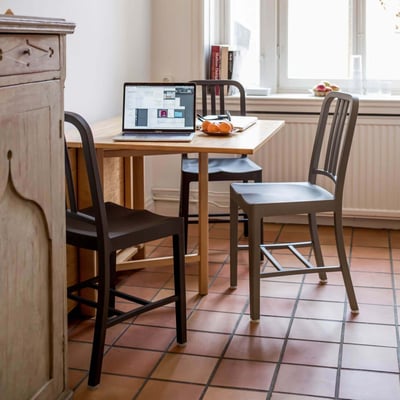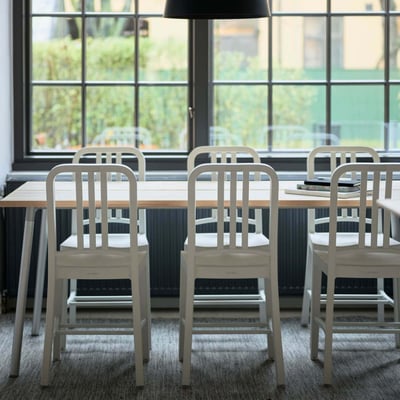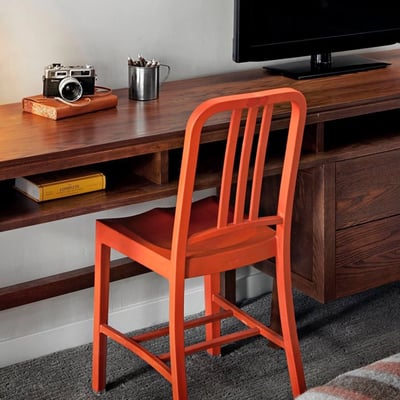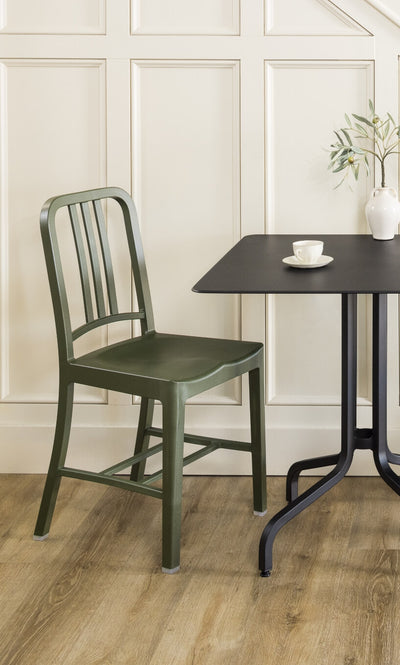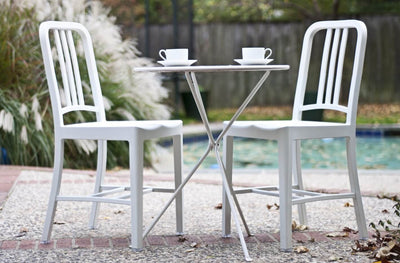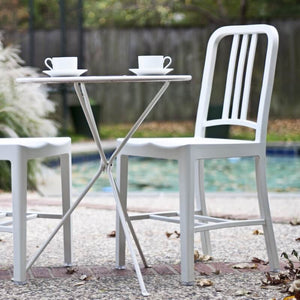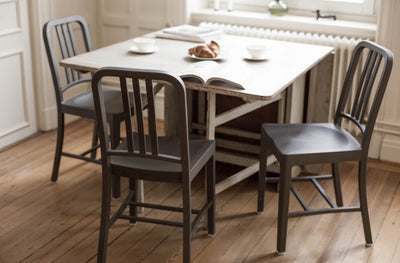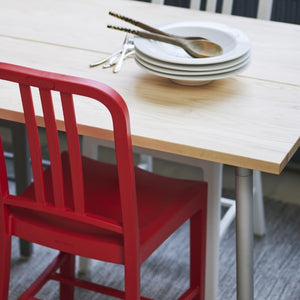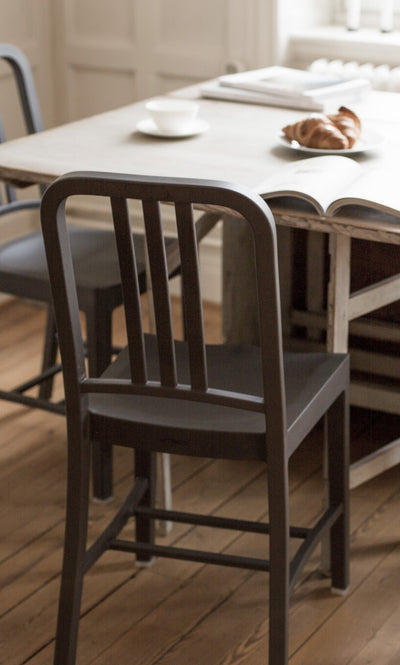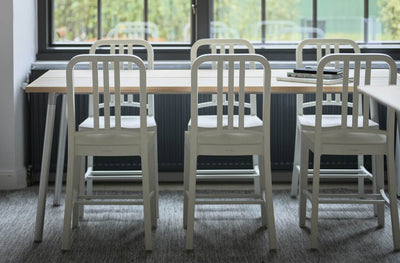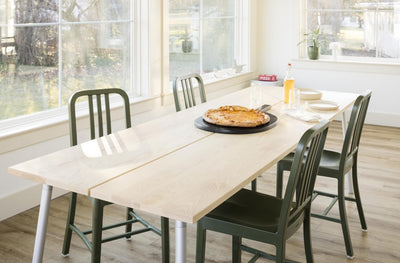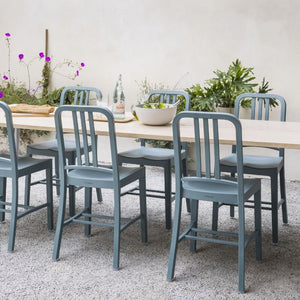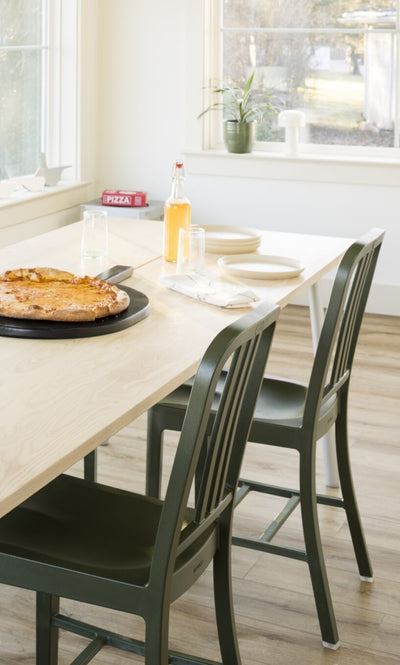Emeco
111 Navy Chair
$550.00
Coca-Cola and Emeco collaborated to solve an environmental problem: upcycling consumer waste into a sustainable, timeless, classic chair. Made of 111 recycled PET bottles, the 111 Navy Chair is a story of innovation.
Details
Wasteful turned into hopeful. 111 Navy chairs and stools are made in the USA from recycled plastic bottles. Each year, this collection keeps millions of plastic bottles out of landfills and oceans. Outdoor approved. Carbon footprint declared. That's good old-fashioned American innovation.
- Sustainably made
- 5-year warranty
- 3-year outdoor colorfast warranty
- Easy to clean
- Made in the USA
Dimensions
Reviews
Care
Shipping, Setup, & Returns
Shipping
Setup
Returns
Buying for a business? We can help.
Let’s work together to find the perfect solution for your project. We’ve partnered with businesses like yours for over 75 years. Enroll now.
